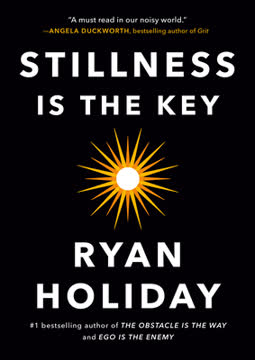Key Takeaways
1. Accounting: The Language of Business
"Accounting is the language of business, and like other languages, it has its own terms and rules."
Understanding accounting is crucial for business success. It provides information that helps people make informed decisions about investing, lending, and managing resources. Accounting involves recording, classifying, and summarizing economic events through financial statements.
Key concepts in accounting include:
- Assets: Resources owned by a business
- Liabilities: Debts owed by a business
- Owner's Equity: The difference between assets and liabilities
- Revenue: Income earned from selling goods or services
- Expenses: Costs incurred to generate revenue
Types of accounting include financial accounting (for external users like investors and creditors) and managerial accounting (for internal decision-making). By mastering this language, business owners can communicate effectively with stakeholders and make better financial decisions.
2. Financial Statements: Your Business's Story in Numbers
"Financial statements must present relevant, reliable, understandable, sufficient, and practicably obtainable information in order to be useful."
The main financial statements are the Balance Sheet, Income Statement, and Statement of Cash Flows. These documents work together to provide a comprehensive picture of a company's financial health and performance.
Key components of financial statements:
- Balance Sheet: Shows assets, liabilities, and owner's equity at a specific point in time
- Income Statement: Presents revenues and expenses over a period of time
- Statement of Cash Flows: Illustrates cash inflows and outflows from operating, investing, and financing activities
Understanding these statements allows business owners to assess their company's profitability, liquidity, and overall financial position. Regular analysis of financial statements helps in identifying trends, making informed decisions, and planning for the future.
3. Generally Accepted Accounting Principles (GAAP): The Rules of the Game
"Generally Accepted Accounting Principles has been defined as a set of objectives, conventions, and principles to govern the preparation and presentation of financial statements."
GAAP provides a standardized framework for financial reporting, ensuring consistency and comparability across different companies and industries. These principles are established by accounting standard-setting bodies like the Financial Accounting Standards Board (FASB) in the United States.
Key GAAP concepts include:
- Consistency: Using the same accounting methods from period to period
- Materiality: Focusing on information that would influence a reasonable person's decision
- Conservatism: Recognizing expenses and liabilities as soon as possible, but only recognizing revenues when they are assured
- Full Disclosure: Providing all relevant information in financial statements
Adhering to GAAP enhances the credibility and reliability of financial statements, making them more useful for decision-making by stakeholders.
4. The Balance Sheet: A Snapshot of Your Business's Health
"The Balance Sheet represents a 'snapshot' of the financial position of the business on that specific date."
The Balance Sheet equation is Assets = Liabilities + Owner's Equity. This statement provides a picture of what a company owns (assets), what it owes (liabilities), and the owner's stake in the business (equity) at a specific point in time.
Key components of the Balance Sheet:
- Current Assets: Cash and assets expected to be converted to cash within a year
- Long-Term Assets: Assets with a useful life of more than one year
- Current Liabilities: Debts due within one year
- Long-Term Liabilities: Debts due after one year
- Owner's Equity: The owner's investment plus retained earnings
Analyzing the Balance Sheet helps in assessing a company's liquidity, solvency, and overall financial strength. It's crucial for making decisions about financing, investing, and managing working capital.
5. The Income Statement: Tracking Your Business's Performance
"The Income Statement presents a summary of an entity's Revenues (what the company earned from sales of products and services) and Expenses (what was expended to earn this revenue) for a specific period of time."
The Income Statement, also known as the Profit and Loss Statement, shows how much money a business made or lost over a specific period. It provides insights into a company's operational efficiency and profitability.
Key components of the Income Statement:
- Revenue: Income from selling goods or services
- Cost of Goods Sold: Direct costs associated with producing goods or services
- Gross Profit: Revenue minus Cost of Goods Sold
- Operating Expenses: Costs incurred in running the business
- Net Income: The "bottom line" or profit after all expenses are subtracted from revenue
Analyzing the Income Statement helps in identifying trends in revenue and expenses, assessing profitability, and making decisions about pricing, cost control, and resource allocation.
6. Cash Flow: The Lifeblood of Your Business
"The Statement of Cash Flows shows the flow of cash within the business—where the cash came from and how it was spent during the period of reporting."
Cash flow is crucial for a business's survival and growth. The Statement of Cash Flows provides information about a company's cash receipts and cash payments during a specific period, categorized into operating, investing, and financing activities.
Key components of the Statement of Cash Flows:
- Cash from Operating Activities: Cash generated from day-to-day business operations
- Cash from Investing Activities: Cash used for or generated from investments in long-term assets
- Cash from Financing Activities: Cash from issuing stock, borrowing, or repaying debts
Managing cash flow effectively involves:
- Monitoring and forecasting cash inflows and outflows
- Maintaining adequate cash reserves
- Optimizing the timing of cash receipts and payments
- Making informed decisions about investments and financing
Understanding and managing cash flow is essential for ensuring a business can meet its financial obligations and take advantage of growth opportunities.
7. Budgeting: Planning for Success
"The budget is a detailed plan that outlines future expectations in quantitative terms."
Budgeting is a critical tool for financial planning and control. It involves estimating future revenues and expenses, setting financial goals, and allocating resources effectively.
Key components of a comprehensive budget:
- Sales Budget: Projected sales for the upcoming period
- Production Budget: Estimated production levels to meet sales goals
- Operating Expense Budget: Anticipated costs for running the business
- Capital Budget: Planned investments in long-term assets
- Cash Budget: Projected cash inflows and outflows
Benefits of budgeting include:
- Providing a roadmap for achieving financial goals
- Facilitating better resource allocation
- Enabling performance evaluation by comparing actual results to budgeted figures
- Identifying potential financial problems before they occur
Regular budget reviews and adjustments help businesses stay on track and adapt to changing circumstances.
8. Financial Analysis: Making Sense of the Numbers
"Rate of return on investment is probably the single most important financial statistic."
Financial analysis involves examining financial statements and other data to assess a company's performance, financial health, and future prospects. It helps in making informed decisions about investments, financing, and operations.
Key financial ratios and metrics:
- Profitability Ratios: Return on Investment, Profit Margin
- Liquidity Ratios: Current Ratio, Quick Ratio
- Efficiency Ratios: Inventory Turnover, Accounts Receivable Turnover
- Solvency Ratios: Debt-to-Equity Ratio, Interest Coverage Ratio
Effective financial analysis requires:
- Comparing ratios over time to identify trends
- Benchmarking against industry standards
- Considering both quantitative and qualitative factors
- Using multiple ratios and metrics for a comprehensive view
By regularly analyzing financial data, business owners can identify strengths and weaknesses, make informed decisions, and improve overall performance.
9. Auditing: Ensuring Financial Integrity
"The auditor's report of a company's financial statements gives the reader and user of these financial statements an assurance that this information is in accordance with an established set of rules (GAAP) and reviewed by the auditor who is independent of management."
Auditing provides assurance that financial statements are free from material misstatements and prepared in accordance with applicable accounting standards. It enhances the credibility and reliability of financial information for stakeholders.
Types of audits:
- External Audits: Conducted by independent Certified Public Accountants (CPAs)
- Internal Audits: Performed by employees to evaluate internal controls and processes
- Compliance Audits: Assess adherence to laws, regulations, and policies
Benefits of auditing include:
- Enhancing the reliability of financial statements
- Identifying weaknesses in internal controls
- Detecting and preventing fraud
- Improving financial reporting processes
Regular audits help maintain financial integrity and build trust with stakeholders.
10. Fraud Prevention and Ethics: Protecting Your Business
"Fraud is an unfortunate but completely preventable situation."
Fraud prevention is crucial for protecting a business's assets, reputation, and long-term success. Implementing strong internal controls and fostering an ethical culture are key to minimizing the risk of fraud.
Fraud prevention strategies:
- Implementing segregation of duties
- Conducting regular audits and surprise checks
- Establishing clear policies and procedures
- Providing fraud awareness training for employees
- Implementing whistleblower programs
Ethical business practices are essential for long-term success and include:
- Setting a strong ethical tone from the top
- Developing and enforcing a code of ethics
- Encouraging open communication about ethical concerns
- Rewarding ethical behavior and addressing misconduct promptly
By prioritizing fraud prevention and ethical conduct, businesses can protect their assets, maintain stakeholder trust, and create a positive work environment.
Last updated:
FAQ
What's "Accounting for Non-accountants" about?
- Purpose of the Book: "Accounting for Non-accountants" by Wayne A. Label is designed to teach the basics of accounting to those without a background in the field. It aims to simplify complex accounting concepts for easy understanding.
- Target Audience: The book is intended for small business owners, entrepreneurs, and individuals who want to understand accounting to make better financial decisions.
- Content Overview: It covers fundamental topics such as financial statements, accounting principles, and the accounting equation, using simple language and examples.
- Practical Approach: The book uses an imaginary small business, Solana Beach Bicycle Company, to illustrate accounting concepts in a practical and relatable manner.
Why should I read "Accounting for Non-accountants"?
- Simplified Learning: The book breaks down complex accounting concepts into easy-to-understand language, making it accessible for beginners.
- Practical Application: It provides practical examples and scenarios that help readers apply accounting principles to real-life situations.
- Comprehensive Coverage: The book covers a wide range of topics, from basic accounting principles to more advanced concepts like budgeting and financial analysis.
- Enhanced Decision-Making: Understanding accounting can help individuals make informed financial decisions, whether for personal finance or business management.
What are the key takeaways of "Accounting for Non-accountants"?
- Understanding Financial Statements: Readers will learn how to read and interpret balance sheets, income statements, and cash flow statements.
- Accounting Principles: The book explains Generally Accepted Accounting Principles (GAAP) and their importance in financial reporting.
- Budgeting and Planning: It emphasizes the role of budgeting in business planning and financial control.
- Fraud Prevention: The book discusses the importance of internal controls and ethical practices in preventing fraud.
How does "Accounting for Non-accountants" explain financial statements?
- Balance Sheet: The book explains the components of a balance sheet, including assets, liabilities, and owner's equity, and how they relate to each other.
- Income Statement: It covers how to calculate net income by subtracting expenses from revenues and the significance of gross profit.
- Cash Flow Statement: The book details how to track cash inflows and outflows to understand a company's liquidity position.
- Practical Examples: Each financial statement is illustrated with examples from the Solana Beach Bicycle Company to enhance understanding.
What are Generally Accepted Accounting Principles (GAAP) according to Wayne A. Label?
- Definition: GAAP are a set of rules and standards used for financial reporting in the United States, ensuring consistency and comparability.
- Components: The book discusses key components of GAAP, including the historical cost principle, revenue recognition, and the matching principle.
- Importance: GAAP provides a framework for preparing financial statements that are reliable and understandable for users.
- International Comparison: The book also touches on differences between U.S. GAAP and International Financial Reporting Standards (IFRS).
How does "Accounting for Non-accountants" address budgeting?
- Purpose of Budgeting: The book explains budgeting as a tool for planning and controlling financial resources in a business.
- Types of Budgets: It covers different types of budgets, including sales, capital, and cash budgets, and their roles in financial planning.
- Budget Preparation: Readers learn how to prepare a master budget by integrating various individual budgets.
- Benefits: Budgeting helps in setting financial goals, monitoring performance, and making informed business decisions.
What is the accounting equation as explained in "Accounting for Non-accountants"?
- Basic Formula: The accounting equation is Assets = Liabilities + Owner’s Equity, representing the relationship between a company's resources and claims.
- Balance Sheet Connection: It forms the foundation of the balance sheet, ensuring that the financial position is accurately represented.
- Transaction Impact: The book explains how different business transactions affect the components of the accounting equation.
- Practical Examples: Examples from the Solana Beach Bicycle Company illustrate how the equation is applied in real business scenarios.
How does Wayne A. Label explain the concept of fraud and ethics in accounting?
- Fraud Definition: Fraud is described as intentional deception or manipulation of financial data for personal gain.
- Fraud Triangle: The book introduces the fraud triangle, which includes pressure, opportunity, and rationalization as factors leading to fraud.
- Prevention Strategies: It emphasizes the importance of internal controls, ethical standards, and employee awareness in preventing fraud.
- Ethical Practices: The book advocates for setting a strong ethical tone from the top to foster a culture of integrity within organizations.
What are the best quotes from "Accounting for Non-accountants" and what do they mean?
- "Accounting is the language of business." This quote highlights the importance of accounting in communicating financial information and making informed decisions.
- "Without the proper accounting information, these types of decisions would be very difficult, if not impossible, to make." It underscores the role of accounting in decision-making processes.
- "The basics of accounting are the same regardless of the size or type of business." This emphasizes the universal applicability of accounting principles across different business contexts.
- "A solid knowledge of accounting is helpful to individuals, managers, and business owners who are making their decisions based on the information accounting documents provide." It stresses the value of accounting knowledge in various professional roles.
How does "Accounting for Non-accountants" explain the role of audits and auditors?
- Audit Definition: An audit is an independent examination of financial statements to ensure they are accurate and comply with GAAP.
- Types of Auditors: The book describes different types of auditors, including CPAs, internal auditors, and governmental auditors.
- Audit Reports: It explains the standard audit opinion and other types of audit reports, such as qualified and adverse opinions.
- Importance of Audits: Audits provide assurance to stakeholders that financial statements are free from material misstatements and are reliable.
How does Wayne A. Label address the differences between proprietorships, partnerships, and corporations?
- Proprietorships: These are businesses owned by a single individual, with simple accounting records separate from personal finances.
- Partnerships: Similar to proprietorships but with two or more owners, requiring separate accounting records for the business and partners.
- Corporations: These are separate legal entities that can issue stock, with more complex accounting due to stockholder equity and dividends.
- Financial Statement Differences: The book explains how financial statements differ among these business types, particularly in the equity section.
What practical advice does "Accounting for Non-accountants" offer for small business owners?
- Hiring an Accountant: The book advises meeting with several accountants to find one whose experience and style match the business's needs.
- Cash Management: It emphasizes the importance of a good cash management plan to avoid running out of cash despite making profits.
- Fraud Prevention: Implementing internal controls and setting ethical standards are recommended to prevent fraud in small businesses.
- Budgeting: The book highlights the necessity of budgeting for planning and controlling financial resources effectively.
Review Summary
Accounting for Non-Accountants, 3E receives mixed reviews, with an average rating of 3.68/5. Readers appreciate its accessible introduction to accounting concepts for beginners, particularly in understanding financial statements. Many find it informative and easy to read, with practical examples. However, some criticize its lack of depth, calculation errors, and suggest that similar information is available online for free. The book is recommended for business leaders and those new to accounting, though readers with prior knowledge may find it lacking in detail.
Similar Books










Download PDF
Download EPUB
.epub digital book format is ideal for reading ebooks on phones, tablets, and e-readers.




